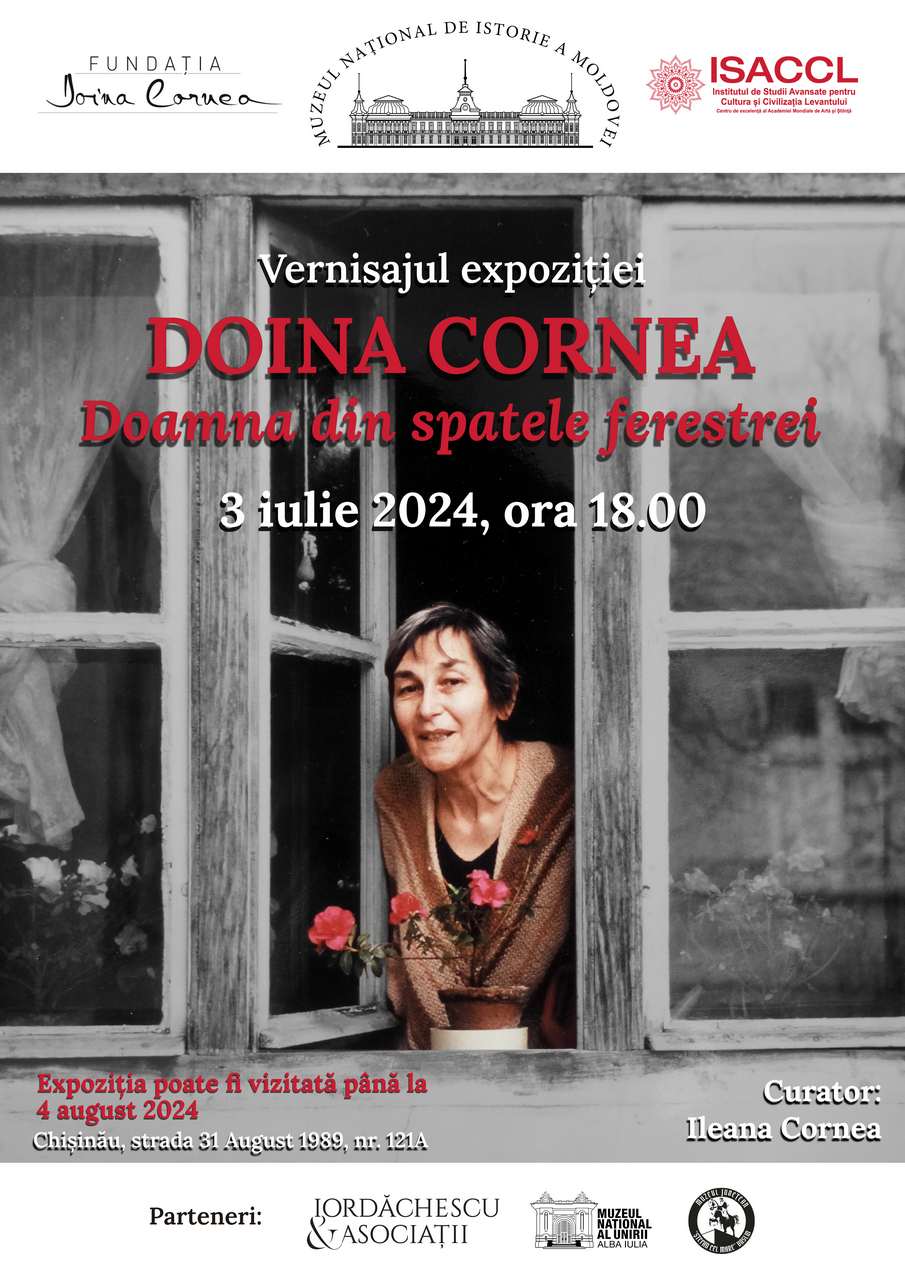
The Doina Cornea Foundation from Cluj-Napoca, Romania, in partnership with the National Museum of History of Moldova and the Institute for Advanced Studies in Levant Culture and Civilization from Romania, is organizing the opening of the exhibition "Doina Cornea - The Lady Behind the Window" on Wednesday, July 3, 2024, at 6:00 PM, at the National Museum of History of Moldova.
The exhibition was prepared by curator Ileana Cornea, art critic, together with Jean Luc Lemerre, architect, and Leontin Horaţiu Iuhas, president of the Doina Cornea Foundation, in collaboration with the National Museum of History of Moldova.
Six years after Doina Cornea's passing, we wish to open a window through which visitors can see her in all her complexity: as a mother, teacher, politician, artist, and writer. The exhibits in this exhibition will illustrate each of these facets of Doina Cornea.
Two events will take place as part of the exhibition:
• July 4, 6:00 PM- The launch of Marius Balo's novel "The Pink Blanket," organized by Litera Publishing House.
• July 5, 6:00 PM - The event "New Perspectives in the Search for the Victims of Communism," supported by the Center for Investigating the Crimes of Communism in Romania (CICCR), a department of the Doina Cornea Foundation.
These events will be attended by Emil Constantinescu, former President of Romania, Marius Oprea (CICCR coordinator), and historians and archaeologists Paul Scrobotă, Horaţiu Groza, Gabriel Rustoiu, and Ramona Mocanu.
The exhibition "Doina Cornea - The Lady Behind the Window" will be open to the public from July 3 - August 4, 2024, in Hall 1 of the National Museum of History of Moldova, Chisinau, 121A 31 August 1989 Street.
